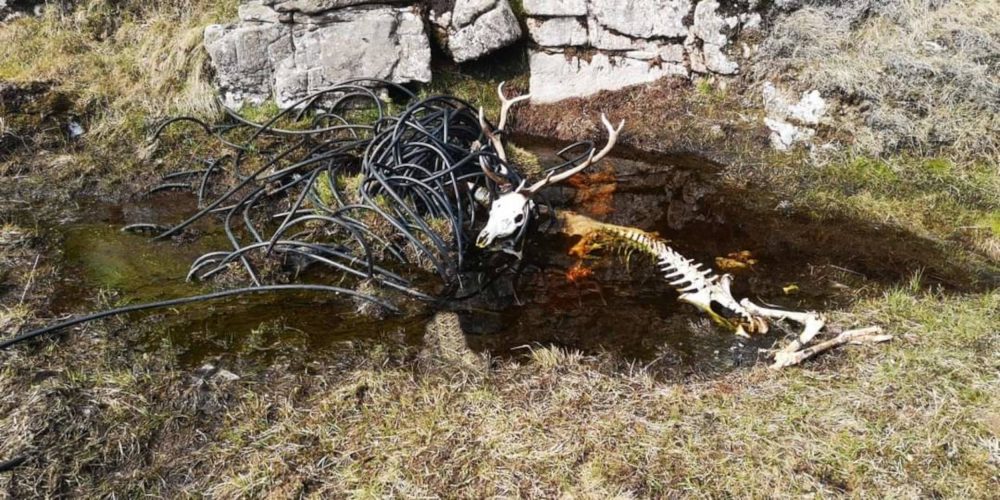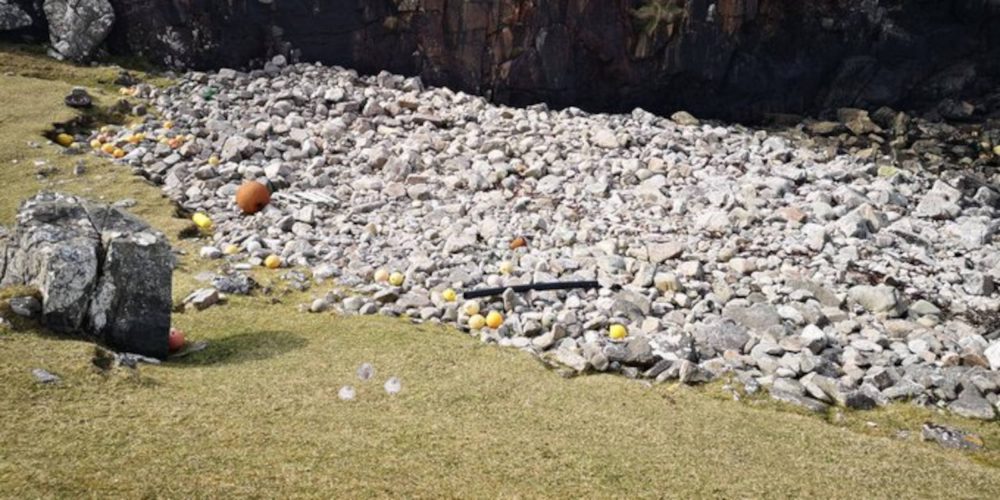A SCOTS wild swimmer captured distressing image showing the remains of a stag that died after becoming entangled in industrial cable.
Colin Macleod, 48, had finished swimming off the coast of the Isle of Lewis last Friday when his friend Stuart Baird, 51, spotted the deceased stag.
The Image shows a huge amount of thick black industrial cable which has become stuck and solidified in the muddy turf below.
Tangled in it, is the skull and antlers of a long dead stag which became trapped in the cable.

The stag’s bare white spinal skeleton is submerged in the brown murky water of the puddle, whilst its hind leg has been left on dry ground above the water.
SSE have since been in touch with Colin and revealed that they are investigating the matter.
Janitor Colin posted the image to Twitter yesterday writing: “This was a very sad sight to see on our ‘SwimCamping’ outing.
“Cable too heavy to get itself out of the pool of water.”
Social media followers have described the scene as “appalling”.
@ZebraGorillaCom wrote: “Natural passing is acceptable but not that sort of thing.
“Shame.”
@Davekidd_58 said: “This is appalling, but it’s a graphic reminder that fly-tipping has consequences.
“We are better than this (well, I wish we could behave like it)!”

@flipdrivel commented: “There must be, well there should be, some legal penalties for utilities companies dumping rubbish like this.”
@Bcool2eachother replied: “This is f****** appalling.”
@66248109eb7f43a wrote : “How awful.”
Speaking today Colin said: “Stuart shouted me over to where he’d found the stag in the pool of water with the cable around it’s antlers. Very very sad.
“At the shore near the skeleton there’s lots of buoys, plastic, wellies, wood etc strewn about.

“Any fish farm feed pipes always get reported and they’re usually pretty quick at being taken away.
“SSE have been in touch and I’ve given them the approximate coordinates of the deer and they said they’d investigate it further.
“Both of us were in shock.
“It definitely put us on a downer for sure.
“It’s a graphic effect of human pollution and we thought about how the poor deer must have suffered a slow and painful death.”
